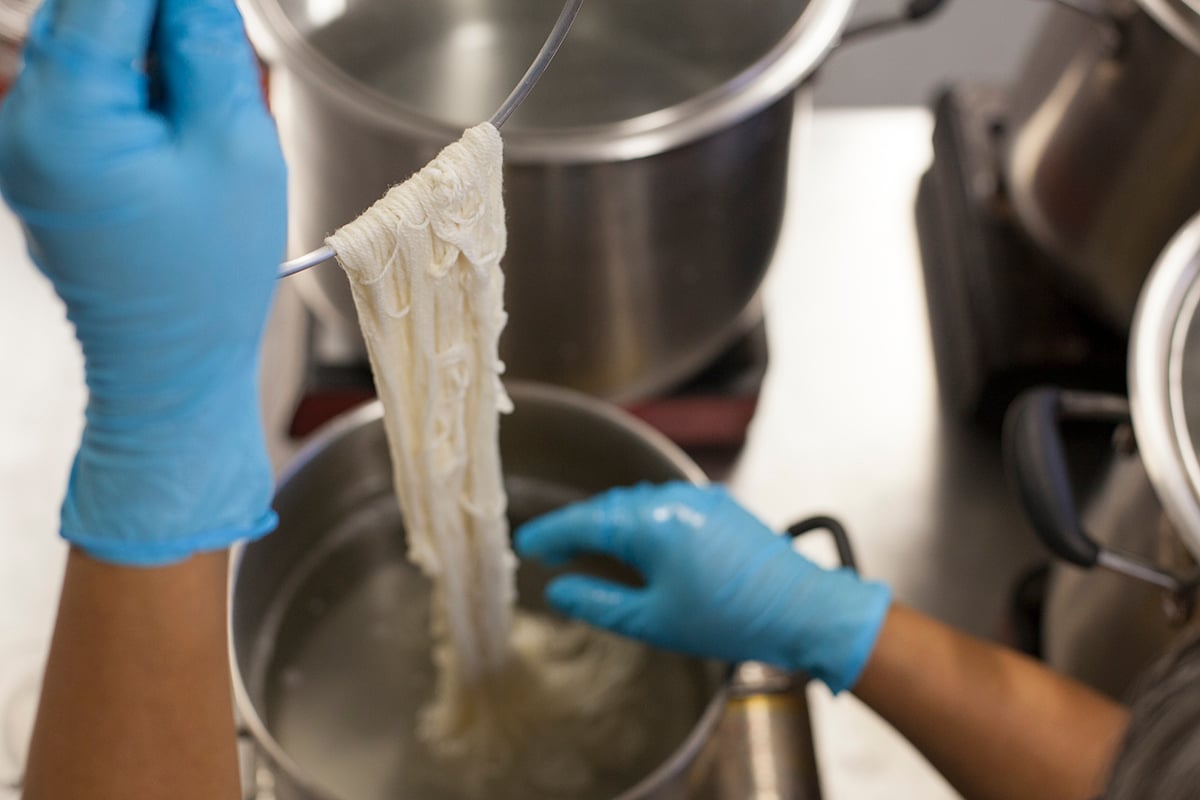
Each week, we are emailed with questions from our natural dye community asking simple and complex questions that we thought might be worth sharing. Here are a handful from this week answered by natural dyer in chief, Kathy Hattori, Founder of Botanical Colors:
I’m having trouble getting alum to dissolve. Even at 10% the solution was cloudy. This time I tried making a paste with boiling water but it still feels pretty crunchy. I’m amazed at how much pigment washes away. Using acid dyes I am used to seeing very little to no pigment in my wash water. I’m doing hand painting so it is likely that my calculations are fuzzy regarding the dye:fiber ratio. I did two lukewarm water rinses (2 3.3 oz skeins wool in 1 gallon water) and a brief wash with detergent (1 gallon water 1/4 teaspoon synthropol) and another rinse or two afterward. At the end there was a faint pink color in the wash water (I used fustic/quebracho red).
If the alum is turning cloudy immediately, that indicates that you probably have a lot of Total Dissolved Solids (TDS) in your water and so the alum is reacting with that. I’m not sure if that’s leading to your next observation, which is that you are getting a lot of washout.
Washout can happen because the mordant isn’t optimally bonded with the fibers, and this can happen when the fiber isn’t completely clean, and/or the mordant isn’t fully bonded. It’s important to scour the yarn completely (Orvus Paste and near-boiling water). Mordant bonding, especially for painting, is important because the dye doesn’t have a lot of time with heat to react with the mordant. You can mordant your fibers in advance and allow them to “cure” for at least 24 hours, then proceed to painting. I’ve painted skeins that were mordanted 6 months previously and allowed to dry, then reconstituted in warm water. They worked great.
Washout is more noticeable with painting and one way to work with that is to actually let your skeins dry completely before rinsing them, again to allow a “curing” process. The washout should be a lot less than if you wash a freshly steamed skein. However, compared to acid dyes, there’s much more washout with natural dyes. The only dye I would not do this with is traditional vatted indigo as the alkalinity of the vat can harshen animal fibers.
One other variable that might affect washout is the hardness of your water. I found that water hardness affected the depth of shade with my dyeing, so you might want to experiment with mordanting and dyeing with reverse osmosis water or distilled to see if that improves color yield and washout. Strategies such as aging the mordant might overcome the water hardness issue – I’ve never experimented with that, so I don’t know, but it’s worth a try.
